Jüterbog
Ozymandias’ shattered visage
Scattered haphazardly all around, like bones in a bombed-out graveyard, Jüterbog’s ruins reluctantly await their fate.
The sleepy village used to be center stage, caught up in the giddy thrill of preparing for war and the spoils it brings.
But the spoils are never the expected ones. Now its buildings are still and silent, devoid of life, holding nothing but scars, regret and hollow emptiness.
Memory barely lingers, blown by the thoughtless wind through broken windows and unseen gaps, carried far away by veterans in Moscow and across the former Soviet Union. Faint residues remain in German nursing homes where dwindling numbers share the buildings’ fate.
The last Soviet soldier left in 1994, but Jüterbog’s history begins long before, before Germany even existed, when the Prussian army bought some 250 acres for shooting and maneuver practice around 1860.
The shootings began straight away on a range 650 x 850 meters and the construction of the first buildings commenced a few years later, presumably during a break in the shooting.
The army’s plot thickened, as it were, and grew larger with the acquisition of land from neighboring villages. Maybe the stray bullets flying around the place helped convince them to sell.
Another 40 acres was added in 1870. These were heady times with the outbreak of the Franco-Prussian War that same year. They weren’t practicing for nothing.
The German Empire was proclaimed on Jan. 18, 1871 at the Palace of Versailles.
During the war around 9,000 French prisoners were interned in Jüterbog and put to work there, extending the site. Many died and were buried there.
The first shooting range was called Altes Lager (Old Camp) after it was decided in 1889 to construct another so the field artillery could be separated from the foot artillery. Maybe they smelled bad.
Whatever the reason, the military treasury snapped up more land to the south of the existing site and construction on the Neues Lager began the following year.
The Dicke Bertha (Big Bertha) monster 42-cm howitzer was tested here before the First World War, shot at targets in Jüterbog from more than 10 kilometers away. The neighbors must have been driven nuts!
Apparently Kummersdorf-Schießplatz chief Erich Steinert was none too happy when a one-ton missile didn’t land 500 meters south of him as planned, but 500 meters north. If it had been only half as awry “the projectile would have hit us,” he reckoned, not unreasonably.
Meanwhile the military training area kept growing to around 5,000 hectares. A new barracks was built for the infantry – despite their bad feet – before the war, and kept growing during it. A hospital was added to the infantry’s new Fuchsberg-Kaserne toward the war’s end, perhaps not a coincidence.
After the war, of course, there were no more military shenanigans. Well, not at first. It started discreetly, with a drop in soldier numbers… until 1930 when things picked up again.
A military airfield (Flugplatz Altes Lager) developed in Jüterbog in 1933, the year from which all of Germany’s subsequent misdemeanors can be blamed on those evil Nazis who descended from space, most likely landing on that very same airfield.
Another military camp, the unfortunately named Adolf-Hitler-Lager (I’m sure it seemed a great idea at the time) was built in the Zinna Forest around seven kilometers to the north of Jüterbog.
It was also known as Lager III or Waldlager (forest camp). SS members were the first to sample its holistic delights.
By 1934, Jüterbog’s military areas comprised the biggest troop-training center in Germany. And the expansion continued.
Inhabitants of neighboring villages had to leave as the total military site was extended to more than 11,000 hectares (27,000 acres).
The Adolf-Hitler-Lager had its own train station by 1937 as it kept growing. More! More! More! There was no end to the development.
At least in those days they weren’t solely building for investors. They even started building an internal rail line before that was stopped in its tracks by the war.
The Red Army took over everything after that. The Soviets turned Jüterbog into one of their most important military bases in the DDR, with an estimated 40,000 soldiers dwarfing the local population of 15,000.
Life was hard for the lowly soldiers – little to eat, strenuous drills, abuse from their superiors – but good for the superiors – loads to eat, no drills, plenty of inferiors to abuse. The officers lived mostly with their families and were paid 1,000 times more then their underlings.
“The officers couldn’t spend their money,” Jüterbog historian Henrik Schulze told the Märkische Allgemeine in 2013. “I knew one once who simply wanted to drink it extravagantly in the Berlin Fernsehturm. He didn’t manage it.”
The Soviets continued using Flugplatz Altes Lager as a Flugplatz, with the 833rd fighter aviation regiment based here from 1953 to 1992. There were helicopters buzzing in and out to get on local residents’ nerves, and Mikoyan-Gurevich MiG-21 supersonic jet fighter planes were a common sight before they were replaced with MiG-23s in 1979.
One can only assume the new planes were better, faster, lighter, perhaps with touch bars of colorful lights to distract bored pilots when they’re bombing Syrian civilians. Yeah, they’ve other priorities now. None of the Russians hung around too long after Mauerfall and the end of that Cold War. The area’s military days were over.
“I never thought I would ever see the Soviets’ withdrawal from the GDR in my lifetime,” Schulze said of their departure in 1994.
Some of the buildings have found use once again as residential homes or sports clubs or whatever, others are being destroyed to make way for the forest, while others continue to wallow in the despair of abandonment – puppies living in a perpetual post-Christmas.
There’s almost too much to explore. I found an upside-down well, stretching up to the heavens like a chimney. It might have been a chimney but in my mind it was a well. I climbed in at the bottom, looked up at the pinpoint of light outlining my only escape, pondered my predicaments and those of mankind, decided we’re all doomed, and climbed out the other escape.
Nothing stays the same. It’s the one thing that’s constant.
LOCATION AND ACCESS (HOW TO FIND GUIDE)
- What: Jüterbog and its military camps, namely Altes Lager, Flugplatz Altes Lager, Neues Lager and Adolf-Hitler-Lager, aka Forst Zinna. The area played host to soldiers’ charades, men playing with guns, for around 130 years before the last ones left in 1994.
- Where: Jüterbog and around it. There are abandoned buildings scattered all around the town itself. You can’t help but notice them. Otherwise you have Flugplatz Altes Lager over to the west and Altes Lager a little bit further north. Neues Lager is more central but it’s mostly developed, and Forst Zinna is around seven kilometers north toward Luckenwalde.
- How to get there: Hop on a regional train to Jüterbog, under an hour from Berlin, and bring your bike to save your legs from unnecessary walking. Point the bike in the direction you want to go and cycle. Here are Altes Lager, Flugplatz Altes Lager, Neues Lager and Forst Zinna on maps. Check the Abandoned Berlin map for all the places featured on the site, zoom toward Jüterbog and print off that section so you’ve something to look at if you get lost. Or bring a book. Reading will distract you from your predicament. Books allow you escape into someone else’s madness.
- Getting in: Too many places to get into how to get into each one. Use your wits and be careful.
- When to go: Daytime is best so you can find your way around and see things.
- Difficulty rating: 7/10. Getting here and finding the places is the main difficulty. Anything that you can explore is easy enough to get into, though you will need to look out for security. See “dangers” below.
- Who to bring: A like-minded intrepid explorer who doesn’t mind cycling with no end in sight and who has plenty of time on their hands.
- What to bring: The usual stuff for a long excursion – beer, food, more beer and maybe more food. Don’t forget your camera, a good torch, a decent jacket now the weather’s getting chillier and some money for beers on the way back.
- Dangers: There are the usual dangers associated with exploring abandoned buildings – holes in the ground, dodgy roofs waiting to collapse on your head, probably asbestos and other nasty things. Security guards are keeping an eye on Forst Zinna, presumably in case the Russians come back. There were four or five vans parked together when I passed by on my rusty old bike, their big-bellied masters all discussing something, most probably lunch. I went around the other side (which is quite dangerous, with high grass and hidden holes including one full of water that an animal had fallen into) but I didn’t meet security when I was in the camp. Be vigilant and very, very careful.
Many thanks as always to Mark Rodden for proofreading and reining in the philosophizing, to Pablo Arboleda for the pleasure of his company on the first visit, and to Marcela and Felipe of Fotostrasse for their assistance yesterday!
German military remains
Kraftwerk Vogelsang
Kraftwerk Vogelsang is a powerless power plant. People gave their lives building it and fighting over it. Now that they’re gone, nobody wants it at all.
Wünsdorf
Wünsdorf was the Soviet military forces’ HQ in Germany, Little Moscow, the Forbidden City. The Nazis used it before that for their underground army HQ.
Niederlehme TSL 44
Niederlehme’s Treib- und Schmierstofflager 44, aka TSL 44, was a former oil and fuel storage facility used by Nazi Germany, then East Germany’s armed forces.
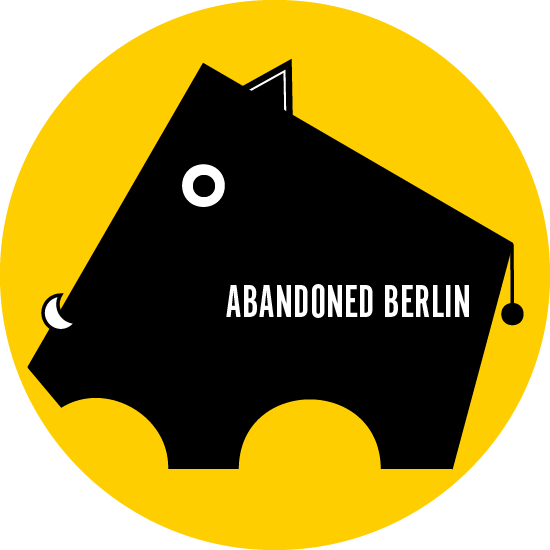
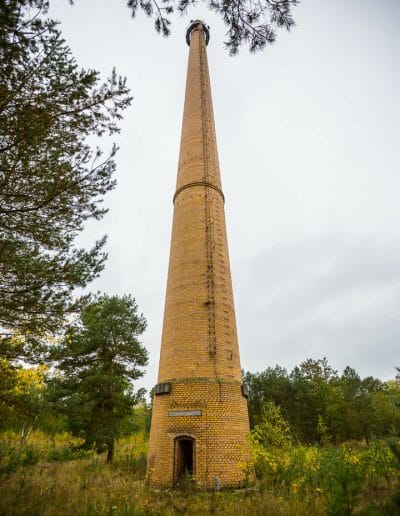
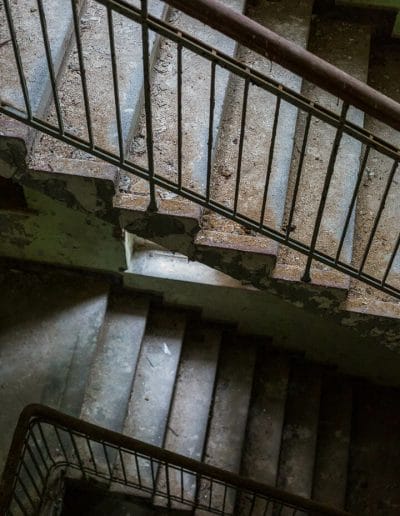





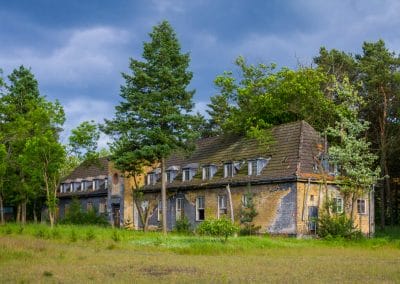

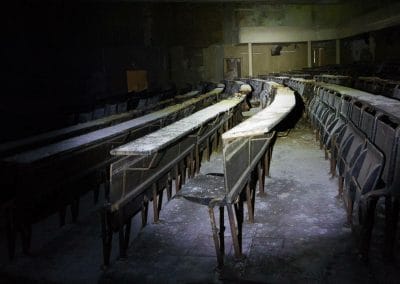
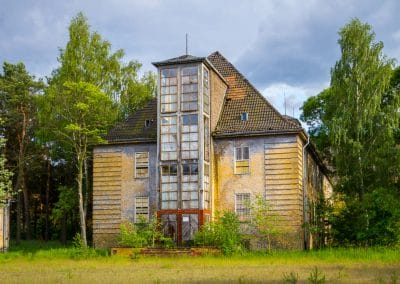
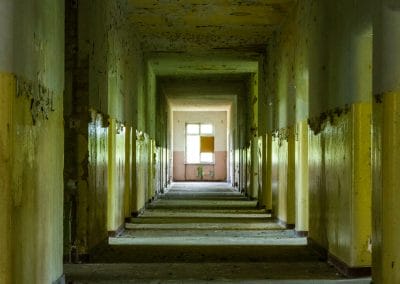

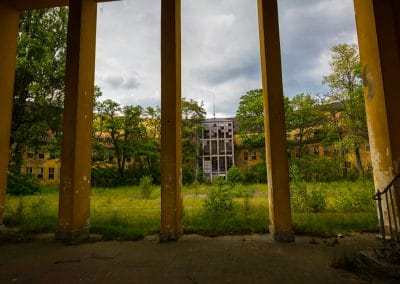
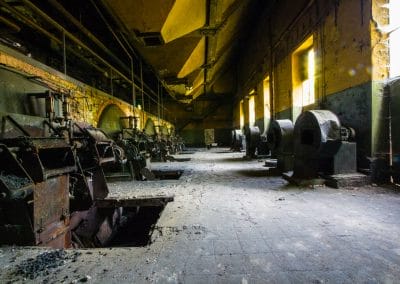
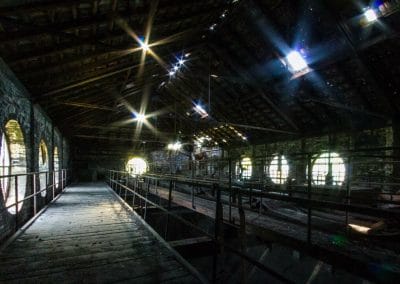

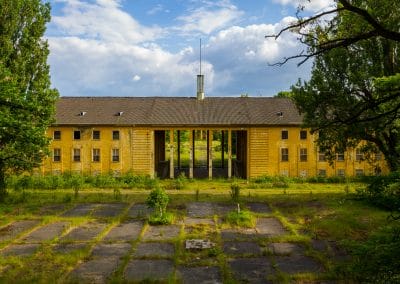
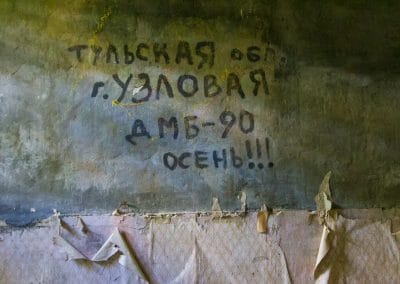
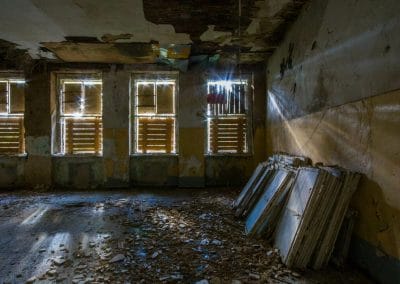

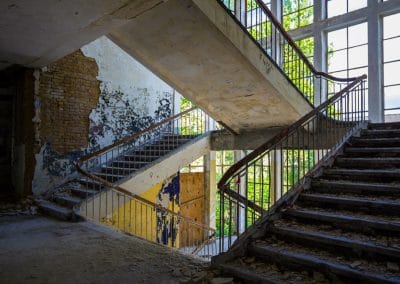


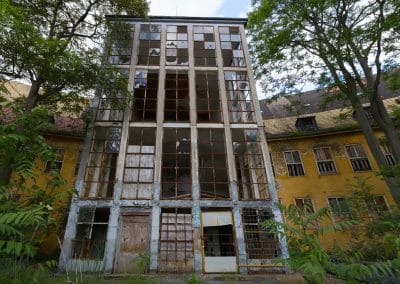


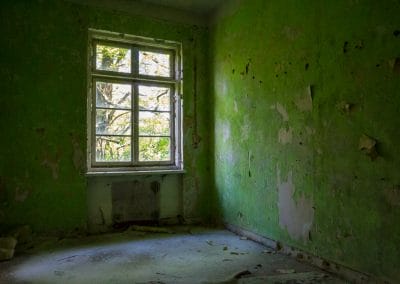

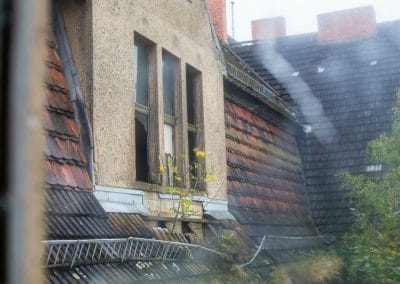

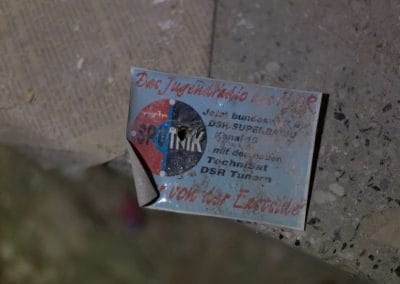
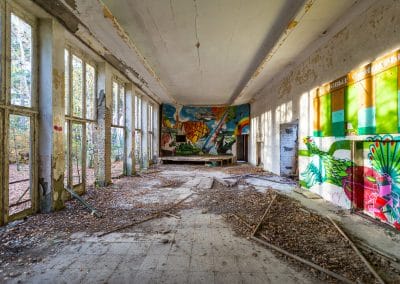
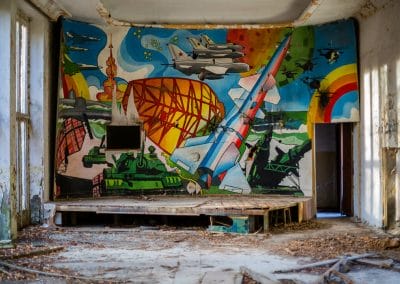
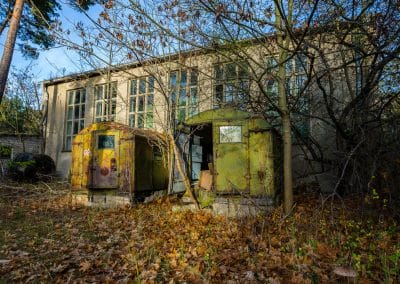
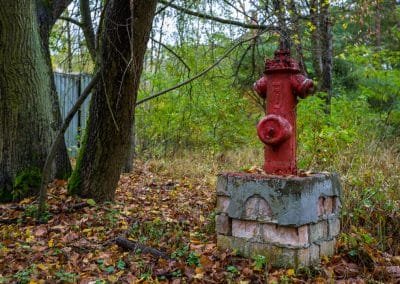
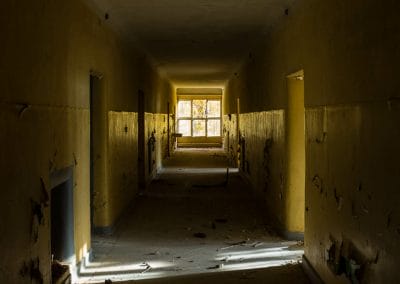
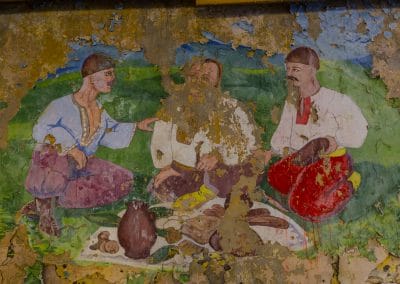
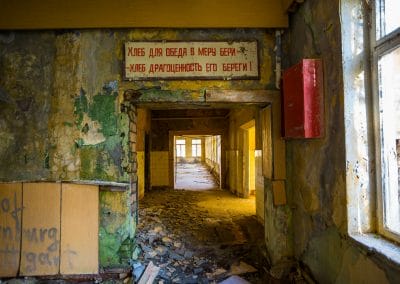
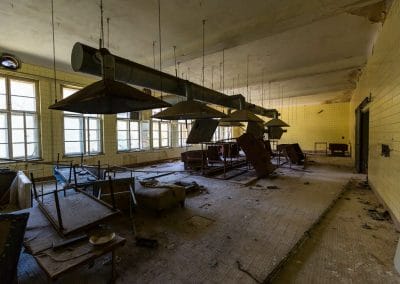
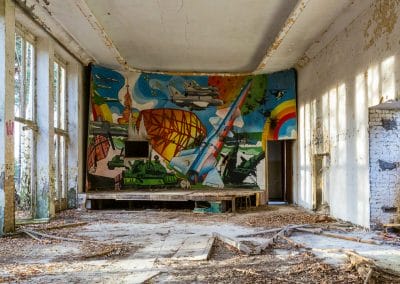
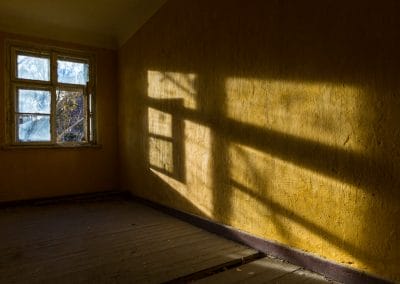
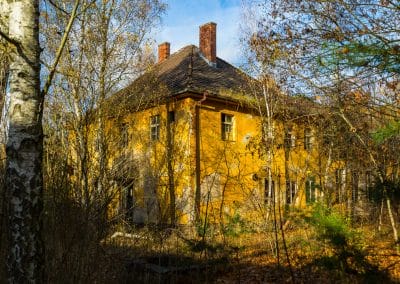
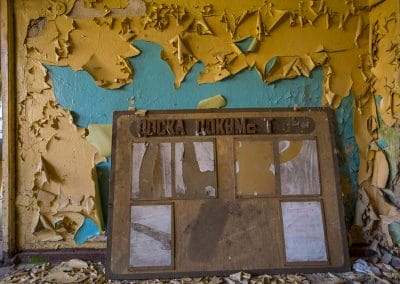
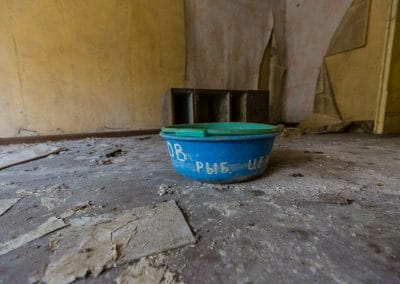
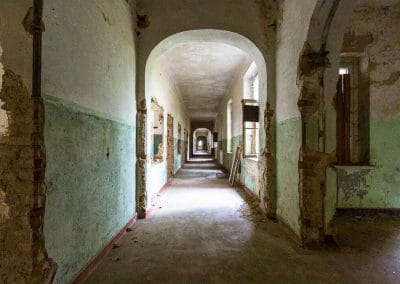




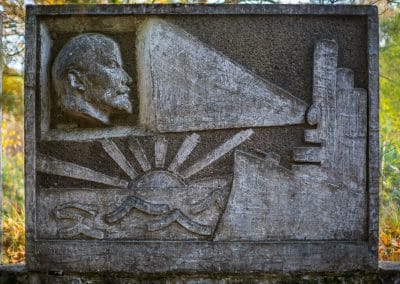
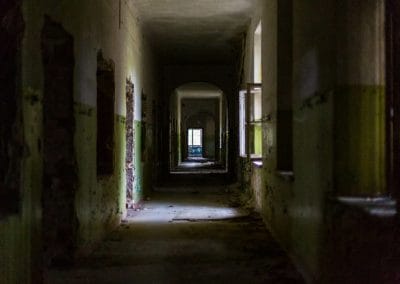
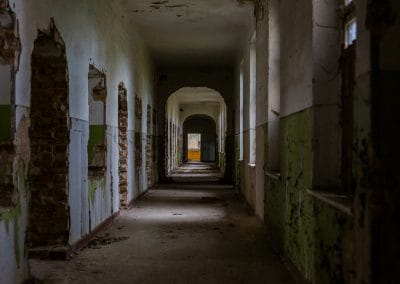
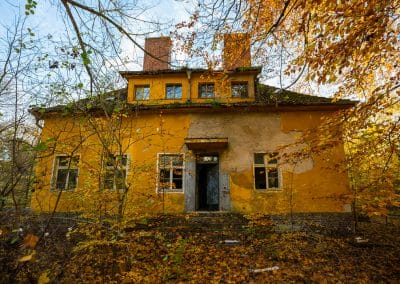
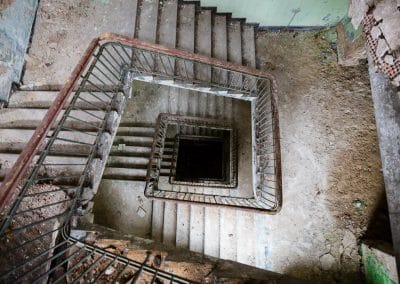

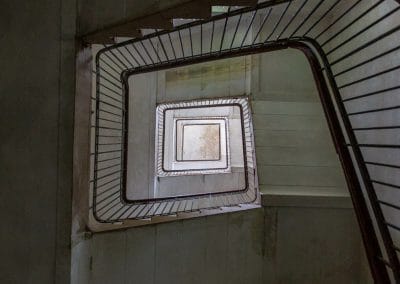


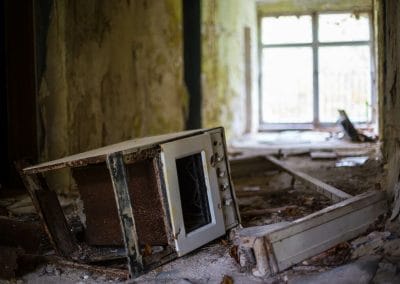
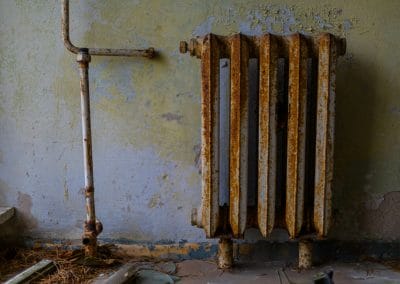



Great article and amazing photos! I’m a big fan of Jüterbog: I went there a few times searching for the Lenin relief you photographed in Forst Zinna and for the wall painting in the old military hospital. You can find more info about those two items in my web “Lenin is still around”
Forst Zinna: leninisstillaround.com/2016/09/17/lenin-in-forst-zinna-eng
Hospital: leninisstillaround.com/2016/07/03/at-the-abandoned-military-hospital
Best greatings, Carlos
Interesting report as always! Looking forward to the next update 🙂
Great read! When I went there with my friend, the door on photo 10 was removed. The pilot school is especially nice to visit. Did you enter the theater?
And was there any security there?
Hello, I entered the theatre in the pilot’s school of Niedergörsdorf in late August 2016. The theatre was quite a discover, I did not expect to find such a remain! No security, nobody around even during the day and in plain sunlight. Yet there are prohibition signs on the outer gate, so you’d better be careful. Also there are sporting facilities to the west of the installation which are still in use today.
You can see a little report on this blog of mine sightraider.com/juterbogniedergorsdorf-abandoned-flight-academy-in-the-gdr/.
Irresponsible… Pretty sure that anyone (including myself) whose hobby involves seeking out abandoned, collapsing and asbestos-ridden places such as this one is well aware of the risks involved, so not sure OP should be held responsible for not providing up-to-date Health and Safety guidelines. Haha.
any update on accessibility and condition of the place? much appreicated
Never mind the bollocks! Keep exploring and posting!
Just be careful with that knee.
Thanks a lot for this blog, I am going to Berlin soon and hope to find one of these places you have showed us. My blog is here, mostly abandoned houses from Estonia and Latvia: papercutsphoto.blogspot.com.ee/
I Went there last weekend and started with neues lager, which was OK but not too exciting, no security and simply climb over one of the entrances from the 102 road.
Not yet satisfied I set sails towards Forst Zinna as I suspected this might be a bit more exciting. Little did I know that I set myself up for a nice detour going to “Forst Zinna Jüterborg-Keilberg” which is a trechorus quicksand-fores, instead of the real “Forst Zinna”. I spent a good 3 hours trying to find some buildings in the forest while leading my useless bike on too sandy paths. DON’T enter this godforsaken sandforest of doom on a bike!
I did realize in the end that I was in the wrong Forst Zinna, and headed over to the real deal. I found an easy entrance, but sadly had no time to explore it. I will go back soon and get revenge on the forest gods!
Great post, maybe try and tone down the verbosity and curb your tendency to overwrite sentences. These are places with pretty ghastly histories and just relaying them should be enough. Lovely photos as always.
Went there today – incredible! Make sure you take bikes though – it’s huge. Really simple to get in, try and check out the old cinema/lecture hall, phenomenal 🙂
Last Saturday we’ve been to Altes Lager and everything was as explained. No guards to be seen anywhere. Highly recommended place. Thank you for your very interesting and informative page. Best wishes from Berlin!
Hi,
on the Jüterbog-page the 3rd image from top shows a small watertower or similar. Does somebody have the coordiantes of this spot? I´ve bees around Jüterbog several times but missed this spot. Where is it? Still there?
I visited Forst Zinna on a Sunday of September 2020.
I was there from 10am to 3pm; at 3pm, a security guard patrolled the site with a white car, asking the explorers to go out. So… beware, this abandoned place is not so abandoned.
However, in 5 hours, I saw so many things, in a place which is a fantastic “soviet time capsule”.
we´ve been to both jüterbog and fort zinna yesterday. In the first place they closed the most of the buildings ( luckily the main building´s door with the soviet soldier´s graffiti was open ) but after 40min we got kicked out. in fort zinna is easy to get in and there are a lot of buildings to see but we got kicked out also from there after 30 min.
Went recently to the Fliegerschule to photographe a Lenin mural (https://leninisstillaround.com/2020/10/29/mural-on-lenins-decree-on-land/) and saw the patrol car driving around the complex. I think they are controlling a lot in Jüterbog lately. But if you’re careful, it should be posible to avoid problems.
Went a few weeks ago – all the buildings I tried were easy to get into and no police or patrol or anything. I guess it depends which day you go. Good luck!
Was there recently – and got caught near the old hospital by ToSa Security. The surprisingly nice guys led me to the gate and…. nothing happened at all. But watch out: Everything is boarded up, there are regular patrols and they told me about video surveillance in some places (that’s why they spotted me).
we visited last week. It was easy enough to get in to Neues Lager (down the laneway of the same name) and we had the place to ourselves for 2 hours. It was great having the freedom and time to look in any building we wanted as they all seemed to be open. Afterwards we headed to Altes Lager and got in down the laneway beside the fire station. Most buildings here were boarded up, we just managed to get in to 1 easily. However after 20 minutes we ran in to security who politely asked us to leave the way we came in, which we did. A fun afternoon’s exploring!
I went to Forst Zinna last week and it was amazing. There are tons of buildings to see. I entered through the back way/forest rather than the front road, and it was pretty easy but I did have to make my way across a small river. I was worried about running into guards, and did not, but I had a very weird experience.. About 20 min in, a helicopter began flying overhead. At first I thought nothing of it, because why on earth would anyone send a helicopter for one random photographer. But they continued circling in tighter and tighter over the abandoned buildings, and eventually hovered directly over one of them, so low I thought they might be about to land. They continued to circle and hover directly over the abandoned buildings. I got the hell out of there just in case, and I highly doubt this would be a regular occurrence. I still think they must have been doing training or something, rather than coming for trespassers. But if anyone else has this experience, I would be curious to know.
I went there today. It is pretty easy to get into the ground when you access from the South. Alternatively, there are a couple of spots where you can easily climb over the wall. You will not find a lot of the things which are shown in the photo collection above anymore since the sites are either destroyed or taken by nature. But it is still worth a trip.
IMPORTANT: I did not find the famous Lenin reliefs which are outside the fenced area. Does anyone know if they are still there? An indication where I can find them is much appreciated.